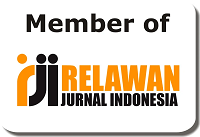INFOGRAFIS KEPENDUDUKAN KOTA MAKASSAR MENGGUNAKAN ALGORITMA K-MEANS
DOI:
https://doi.org/10.31963/elekterika.v20i2.4488Keywords:
Makassar, Kependudukan, Sistem Infografis, Algoritma K-MeansAbstract
Makassar City is the fourth-largest city in Indonesia and the largest in Eastern Indonesia with an area of 175.77 square km and a population of ±1.5 people in 2019, divided into 15 districts and 143 sub-districts. Uneven population density in each sub-district has an impact on the emergence of social problems in society such as: unhealthy environment, chaotic building management, population registration information that is not updated. To overcome this problem, it is necessary to have population info graphics that show the population, age of the population, education, etc. With info graphic data on the population of Makassar city that can be accessed online, people looking for data can use it as a reference. To achieve the objectives of this research, the K-means algorithm method is used to divide observations into K clusters where each observation is a member of the cluster with the closest average value, through an iterative process until the grouping converges. The K-means algorithm can be used on population data. For example, the grouping of population data is divided into three clusters, namely (cluster 1) dense, (cluster 2) medium and (cluster 3) not dense. The results obtained show that five districts: Mariso, Mamajang, Makassar, Bontoala and Tallo are the districts with the densest populations.References
(https://sulselprov.go.id/pages/info_ lain /22)
Kurniasih, N. (2017). Infografis.
Harjito, Dwipraptono Agus. "PEMBUATAN INFOGRAFIS DUSUN KRAJAN I." Asian Journal of Innovation and Entrepreneurship 4.2 (2015): 123-126.
Ali, Muhammad Ichsan, and Muhammad Rais Abidin. "Pengaruh kepadatan penduduk terhadap intensitas kemacetan lalu lintas di Kecamatan Rappocini Makassar." Seminar Nasional LP2M UNM. Vol. 1. No. 1. 2019.
Irianto, Gatot.. Lahan dan Kedaulatan Pangan. Jakarta: Gramedia Pustaka Utama 2016
Yunus, Hadi Sabari. Manajemen Kota Perspektik Spasial. Pustaka Pelajar ; Yogyakarta 2005
Smiciklas, Mark. The power of infographics: Using pictures to communicate and connect with your audiences. Que Publishing, 2012.
Marpaung, Preddy, and R. Fanry Siahaan. "Penerapan Algoritma K-Means Clustering Untuk Pemetaan Kepadatan Penduduk Berdasarkan Jumlah Penduduk Kota Medan." J-SAKTI (Jurnal Sains Komputer dan Informatika) 5.1 (2021): 503-521.
Sari, R. W. and Hartama, D. (2018) ‘Data Mining : Algoritma K-Means Pada Pengelompokkan Wisata Asing ke Indonesia Menurut Provinsi’, Seminar Nasional Sains & Teknologi Informasi (SENSASI), pp. 322–326.
Sugionoet al.(2019)‘Pengelompokan Perilaku Mahasiswa Pada Perkuliahan E-Learning dengan K-Means Clustering’, Jurnal Kajian Ilmiah, 19(2), pp. 126–133.










